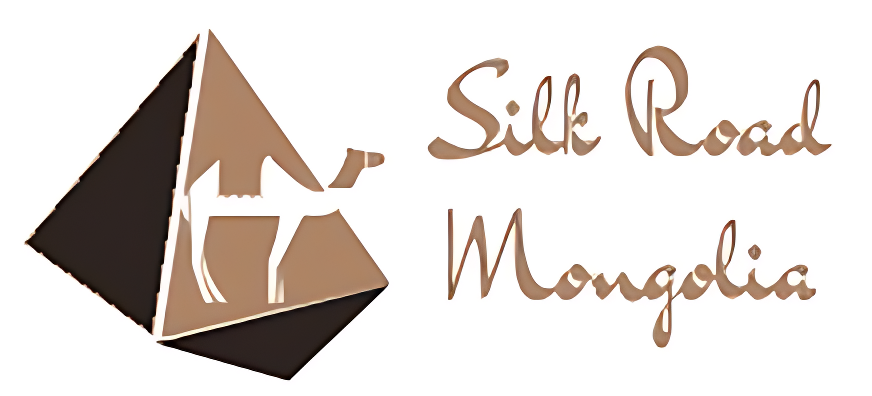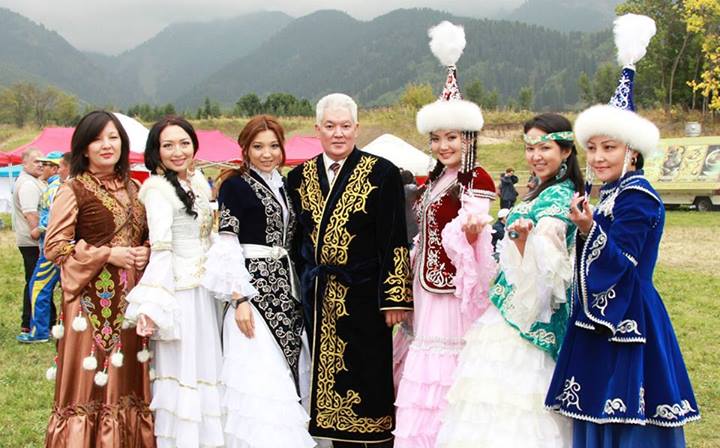Culture
Kazakh Clothing: History, Culture, and Modern Fashion Revival
Traditional Kazakh Clothing for Men
Kazakh men’s clothing reflects centuries of nomadic life, cultural pride, and adaptation to the vast steppes of Central Asia. Traditional garments were designed not only for beauty but also for practicality — offering protection from Kazakhstan’s harsh climate while symbolizing a man’s social status and tribal identity.
Common materials included wool, leather, and fur, often decorated with intricate embroidery and gold thread.
Shop: https://silkroadmongolia.com/shop/clothing/kazakh-clothing/
Shapan (Шапан)
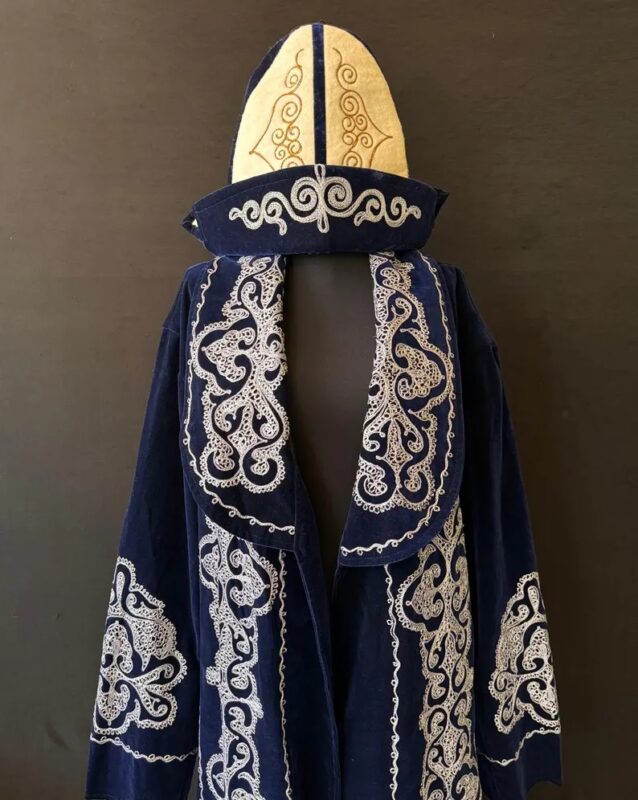
The shapan is the most iconic piece of traditional Kazakh men’s clothing, symbolizing dignity, warmth, and social standing. This long, robe-like garment is made from cotton, wool, or velvet and often lined with fur for insulation during harsh winters.
The shapan was worn by all classes of Kazakh men, but its fabric, color, and embroidery revealed the wearer’s status. Nobles and wealthy herders favored richly decorated shapans with gold thread and silk lining, while common men wore simpler versions suited for everyday life on the steppe.
Tymaq (Тымақ)

The tymaq is a traditional fur hat worn by Kazakh men, essential for surviving Kazakhstan’s frigid winters. Made from fox, wolf, or sheepskin, the tymaq features ear flaps that protect against cold winds while riding across the steppes. Its structure is both functional and symbolic — men of high rank often wore larger, more decorated versions, signifying wisdom and authority.
Kalpak (Қалпақ)
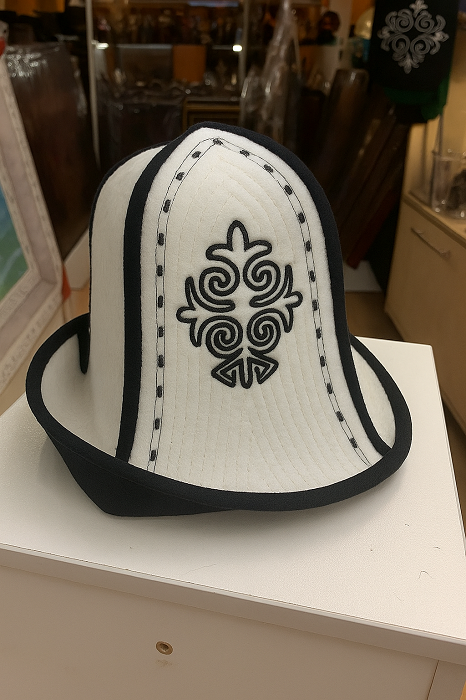
The kalpak is a high, pointed felt hat that Kazakh men traditionally wore during warmer seasons or ceremonial occasions. Made from white felt with black or colored trim, it symbolizes purity, wisdom, and dignity. Unlike the fur-lined tymaq, the kalpak is lightweight and breathable, making it ideal for the steppe’s dry heat. Its design also reflects regional identity, with variations in shape and embroidery across Kazakhstan’s different tribes.
Ichigi (Ішік / Ічігі)
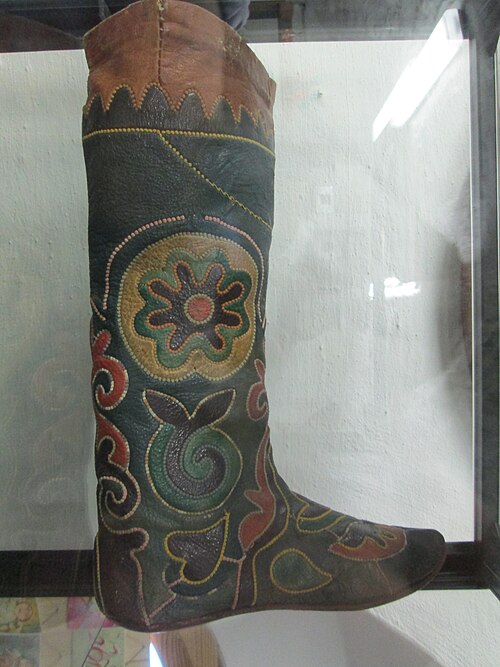
Ichigi were essential footwear for Kazakh men. The ichigi were soft inner boots, often made of leather, worn for comfort and insulation. Their upturned toes and high shafts made them practical for life on the steppe, while decorative stitching and metal embellishments reflected personal taste and wealth.
Takiya (Тақия)
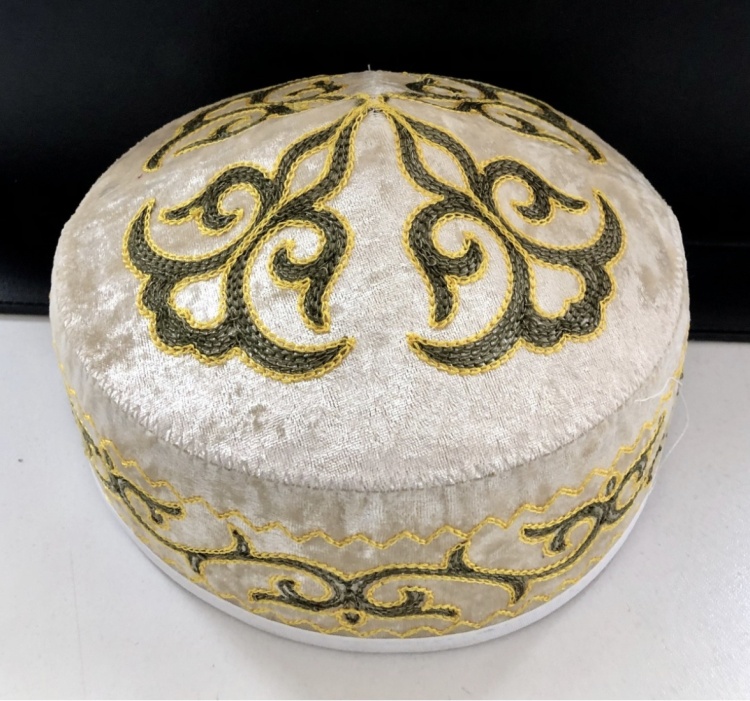
The takiya is a traditional Kazakh men’s cap that has been an integral part of the national costume for centuries. This small, round skullcap is typically made from soft materials such as velvet, silk, or cotton, and is often lined for comfort.
The takiya serves both practical and cultural purposes: it protects the head from the sun, keeps hair in place under larger hats like the kalpak or tymaq, and completes the elegant silhouette of traditional Kazakh attire. Many takiyas feature elaborate embroidery or beadwork, with patterns inspired by nomadic symbols, floral designs, or geometric shapes that reflect the artistry of Kazakh craftsmanship.
Traditional Kazakh Clothing for Women
Traditional Kazakh women’s clothing beautifully reflects the nation’s nomadic roots, craftsmanship, and spiritual beliefs. Every element — from the long flowing dresses to the richly embroidered headdresses — symbolizes grace, prosperity, and identity.
Designed to suit Kazakhstan’s extreme climate, women’s garments balanced practicality with elegance, using materials like silk, velvet, wool, and fur. Bright colors, intricate patterns, and shimmering ornaments were common, reflecting joy, fertility, and social rank. The diversity of attire across regions and tribes showcases the richness of Kazakh culture, where clothing served not only as decoration but as a mark of family, marital status, and even life stage.
Even today, traditional Kazakh women’s attire continues to inspire modern designers, appearing in weddings, cultural performances, and international fashion shows.
Koylek (Көйлек)
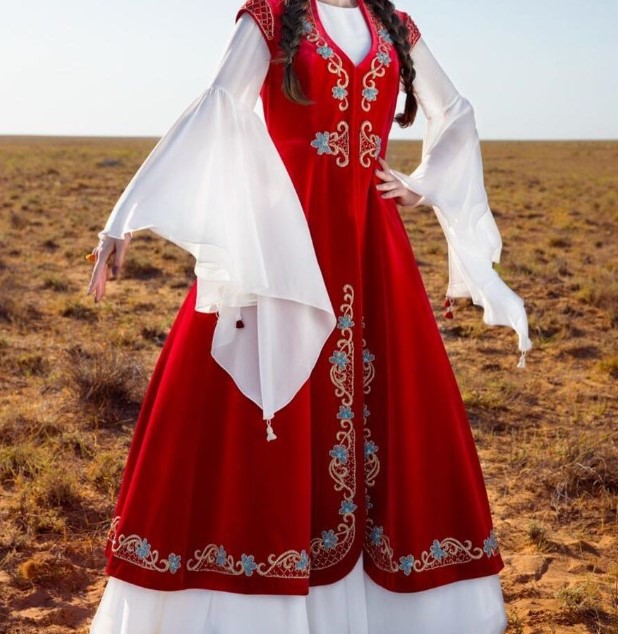
The koylek, or traditional Kazakh women’s dress, is one of the most essential garments in the female wardrobe. Usually made from fine materials like silk, satin, or velvet, the koylek is long and flowing, emphasizing femininity and grace. It often features puffed sleeves, a fitted bodice, and a wide skirt that allows freedom of movement. Everyday koyleks were simpler, while festive or bridal versions were adorned with embroidery, lace, or beaded decorations symbolizing wealth and fertility.
Saukele (Сәукеле)
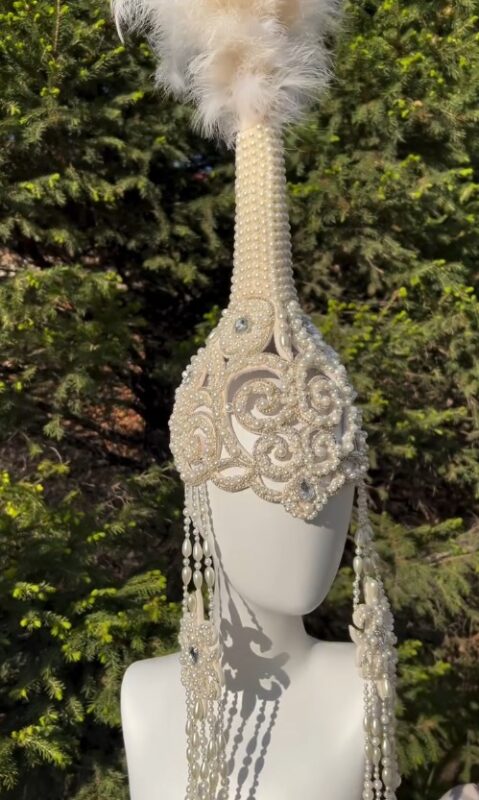
The saukele is perhaps the most magnificent and symbolic piece of Kazakh women’s clothing — a tall, ornate bridal headdress worn during the wedding ceremony. Standing up to one meter high, it was traditionally made from felt or leather and lavishly decorated with silver ornaments, pearls, coral, and owl feathers. The saukele represented purity, beauty, and a family’s prosperity. For nomadic families, preparing a saukele was a major investment, often made years in advance for a daughter’s marriage.
Kamzol (Камзол)
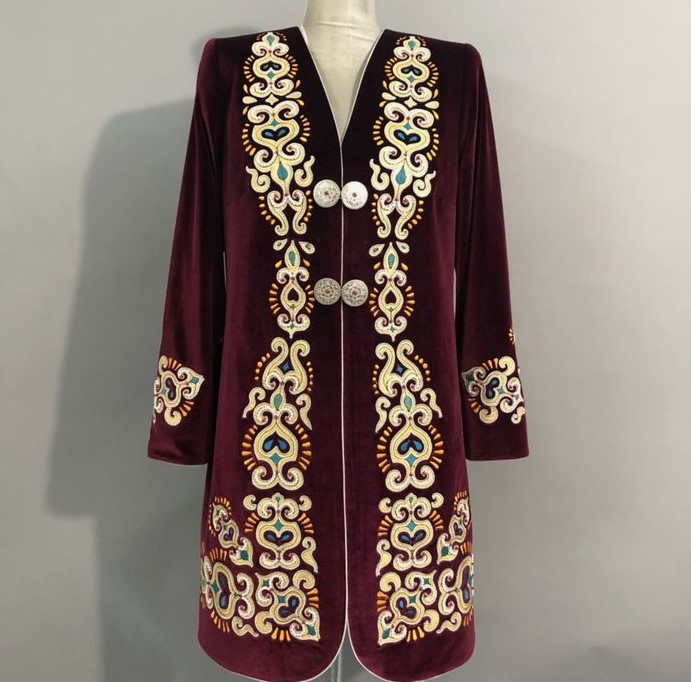
The kamzol is a sleeveless vest worn over the koylek, designed to accentuate the waist and showcase fine craftsmanship. Made from velvet or brocade, the kamzol was richly embroidered with gold or silver thread and sometimes trimmed with fur or lace. It was both decorative and functional — adding warmth while emphasizing elegance.
Different regions had unique embroidery styles, allowing the kamzol to reflect tribal identity and local artistry.
Kimeshek (Кимешек)
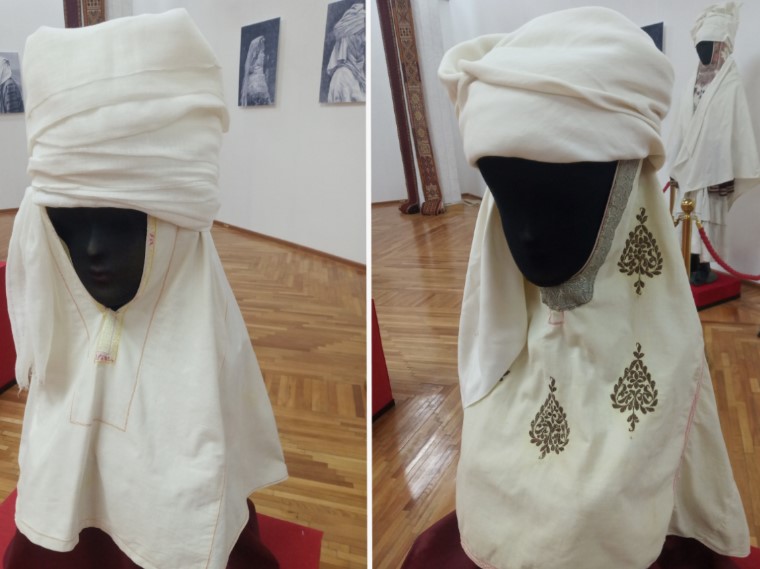
The kimeshek is a traditional head covering worn by married Kazakh women. Made from white cotton, silk, or linen, it covers the neck, shoulders, and chest, symbolizing purity, wisdom, and devotion. The kimeshek was carefully tailored to fit snugly around the head, often embroidered along the edges with colorful threads or silver ornaments.
Shaulan and Oramal (Шаулан / Орамал)
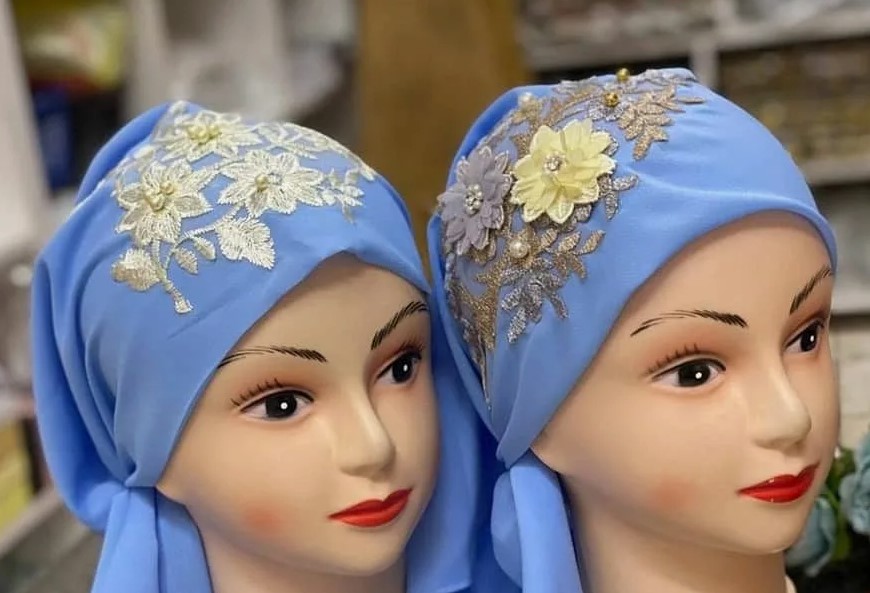
The shaulan and oramal are types of headscarves commonly worn by Kazakh women in both traditional and modern contexts. The shaulan is a long, decorative scarf draped elegantly over the shoulders or head, often made from silk or chiffon. It was used for festive occasions or as a sign of respect in public gatherings. The oramal, on the other hand, is a simpler square scarf worn daily by married women, symbolizing modesty and maturity.
Modern Day Kazakh Clothing & Fashion
In modern Kazakhstan, traditional attire is often reserved for weddings, holidays, and national celebrations like Nauryz, while everyday clothing mirrors global trends. However, many young designers are reviving national motifs through streetwear, formal wear, and accessories — turning ancestral patterns into fashionable statements.
